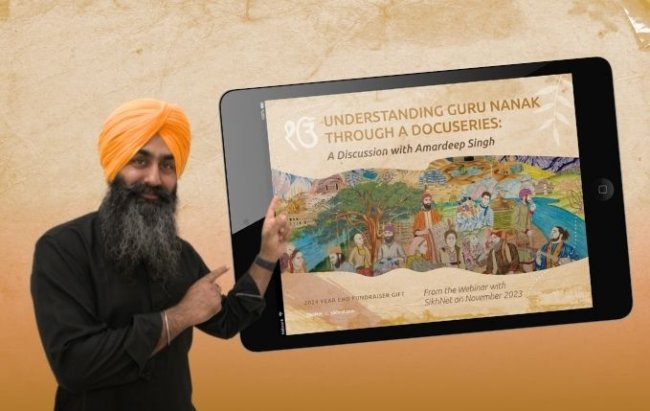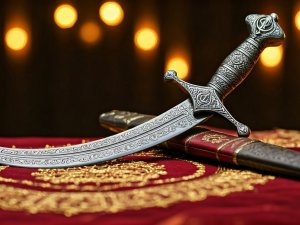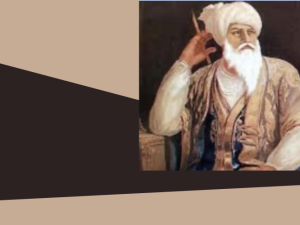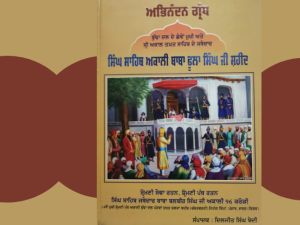The release of 52 Rajas from Gwalior prison by Guru Hargobind Sahib, the sixth Sikh Guru, marks a pivotal episode underscoring Sikh values of justice, courage, and selfless service. Known as “Bandi Chhor Divas,” this event is celebrated as a testament to the Guru’s commitment to freedom and solidarity.
After his father, Guru Arjan Dev, was martyred on the orders of Emperor Jahangir, Guru Hargobind ascended as the sixth Guru, promoting “Miri-Piri”—dual spiritual and temporal sovereignty. This approach established Sikhs as defenders of justice. When Guru Hargobind Sahib was detained at Gwalior Fort by Jahangir, who viewed his influence with suspicion, he encountered 52 Hindu Rajas imprisoned for opposing Mughal rule. Through his resilience and spiritual leadership, he gained their respect and uplifted their spirits.
Upon his release, Guru Hargobind insisted on securing the freedom of the Rajas as well, symbolically leading them out by a special robe with 52 tails, signifying unity. This act reinforced his dedication to justice and the well-being of others. The legacy of Guru Hargobind Sahib as a “Miri-Piri” leader and his defense of the oppressed laid a foundation for Sikh principles, inspiring future leaders, like Guru Gobind Singh, in upholding autonomy, justice, and compassion. The story of the 52 Rajas remains a powerful reminder of leadership that champions collective liberation.
I have compiled and tried my best a list of these 52 Rajas released by Guru Hargobind Sahib from Gwalior fort.
1. Raja Dharam Chand of Narmada
Little information is recorded about Raja Dharam Chand of Narmada, but he was known for his regional influence near the Narmada River, highlighting his reign’s importance in central India.
2. Raja Vikramajit Singh of Mewar
Raja Vikramajit Singh (d. 1531) was a ruler of Mewar, though his reign faced significant challenges from external threats. He is remembered for his internal conflicts and struggles for power within the Mewar dynasty.
3. Raja Jai Singh of Marwar
Jai Singh (1619–1678) was a notable ruler of Marwar (Jodhpur). He played a significant role in expanding Marwar’s influence and had a tumultuous relationship with the Mughal Empire, balancing allegiance and autonomy.
4. Raja Gaj Singh of Marwar
Gaj Singh (ruled 1619–1638) was the ruler of Marwar after the decline of the Mughals. He is remembered for efforts in consolidating Marwar’s territories during a period of regional instability.
5. Raja Rai Singh of Bikaner
Rai Singh (r. 1571–1612) was a celebrated ruler of Bikaner, known for his loyalty to the Mughal emperor Akbar. He expanded Bikaner’s boundaries and erected the renowned Junagarh Fort, symbolizing his architectural legacy.
6. Raja Karan Singh of Bikaner
Karan Singh (r. 1631–1669) was Rai Singh’s successor in Bikaner, known for his military and administrative skills. He is often noted for maintaining his kingdom’s stability during the complex Mughal-Sikh conflicts.
7. Raja Suraj Mal of Bharatpur
Suraj Mal (d .1763) was one of Bharatpur’s most famous rulers. Known as the “Plato of the Jats,” he expanded Bharatpur’s reach, building the formidable Lohagarh Fort and frequently clashing with the Mughals and Marathas.
8. Raja Anup Singh of Bikaner
Anup Singh (d. 1698) was a scholarly ruler of Bikaner who expanded the kingdom’s cultural pursuits. He was also a military commander under the Mughal Empire, with achievements noted in the Deccan campaigns.
9. Raja Jaswant Singh of Jodhpur
Jaswant Singh (d. 1678) was a key figure in Marwar’s history and served as a Mughal general. Despite his loyalty to the Mughal emperor, his kingdom faced conflicts upon his death, impacting Marwar’s succession.
10. Raja Udaybhan Singh of Dholpur
Udaybhan Singh was the last ruling monarch of Dholpur before the princely states were merged into India. His rule is remembered as a transitional period leading up to India’s integration of princely states.
11. Raja Chhatrasal of Bundelkhand
(d. 1731) Raja Chhatrasal was a prominent leader in Bundelkhand, known for his resistance against Mughal domination and for establishing a powerful kingdom.
12. Raja Indraman of Orchha
(dates unknown) Raja Indraman was a ruler of Orchha, a central Indian state, remembered for maintaining Orchha’s autonomy in a politically complex era.
13. Raja Pratap Singh of Idar
Raja Pratap Singh is noted for defending Idar and for his efforts to strengthen his state’s position in the face of regional conflict.
14. Raja Bhim Singh of Kishangarh
(r. 1706–1748) Known as a patron of art, Raja Bhim Singh’s court in Kishangarh was notable for its support of miniature paintings, especially the Kishangarh style.
15. Raja Kesar Singh of Kishangarh
(dates unknown) Raja Kesar Singh contributed to the development of Kishangarh, supporting cultural advancements and strengthening local governance.
16. Raja Shyam Singh of Mewar
(dates unknown) Raja Shyam Singh played a role in regional administration and governance, continuing Mewar’s legacy of independence.
17. Raja Sujan Singh of Jodhpur
(r. 18th century) Raja Sujan Singh worked to maintain Jodhpur’s stability amidst shifting alliances and regional conflicts in Rajasthan.
18. Raja Durjan Sal of Idar
(d. 1739) Raja Durjan Sal, a powerful figure in Idar, faced significant challenges from neighboring states but managed to keep Idar’s influence intact.
19. Raja Prithvi Singh of Kishangarh
(r. early 18th century) Raja Prithvi Singh is known for fostering the arts in Kishangarh and for his efforts to develop the state’s administration.
20. Raja Raj Singh of Bundi
(r.1692–1707) Raja Raj Singh is noted for his strong leadership in Bundi, strengthening its fortifications and consolidating the state’s defense.
21. Raja Budh Singh of Bundi
(dates unknown) Raja Budh Singh continued Bundi’s tradition of resistance and expansion, contributing to its standing in Rajasthan.
22. Raja Churamani of Rewa
(dates unknown) Raja Churamani upheld Rewa’s sovereignty and focused on regional stability in the central Indian region.
23. Raja Shiv Singh of Gwalior
(r. early 18th century) Raja Shiv Singh led Gwalior during a period of political flux, striving to enhance the kingdom’s security and influence.
24. Raja Jai Singh of Jaipur
(d.1743) Also known as Jai Singh II, he was an astute statesman, builder, and astronomer who founded Jaipur city and built observatories across India.
25. Raja Ram Singh of Jaipur
(r. mid-17th century) Raja Ram Singh ruled Jaipur during a time of Mughal expansion, often navigating complex relations with the Mughal court.
26. Raja Kirat Singh of Chamba
(r. 17th century) Known for strengthening Chamba, Raja Kirat Singh enhanced the kingdom’s defenses and oversaw peaceful relations with neighboring states.
27. Raja Dharam Singh of Sirmour
(r. early 18th century) A skilled administrator, Raja Dharam Singh expanded Sirmour’s reach and maintained its stability during his rule.
28. Raja Fateh Singh of Sirmour
(r. 18th century) Raja Fateh Singh’s rule is remembered for efforts in administration and regional diplomacy.
29. Raja Ajmer Singh of Kahlur
(dates unknown) He played a role in reinforcing the Kahlur region’s defenses and promoting internal growth.
30. Raja Gopal Singh of Nurpur
(dates unknown) Known for his cultural patronage, Raja Gopal Singh contributed to the arts and architecture of Nurpur.
31. Raja Raghunath Singh of Jaisalmer
(r. 18th century) Raja Raghunath Singh helped to maintain Jaisalmer’s strategic position in trade routes through the desert.
32. Raja Sawai Singh of Jodhpur
(dates unknown) A ruler dedicated to strengthening Jodhpur, Sawai Singh contributed to its defense infrastructure.
33. Raja Umaid Singh of Jodhpur
Known for modernizing Jodhpur, Raja Umaid Singh built Umaid Bhawan Palace and improved infrastructure.
34. Raja Abhay Singh of Jodhpur
(d.1749) A celebrated military leader, he expanded Jodhpur’s territories through successful campaigns.
35. Raja Bahadur Singh of Jodhpur
(dates unknown) He worked to consolidate Jodhpur’s internal administration and maintain regional alliances.
36. Raja Anand Singh of Jhalawar
Known for fostering the growth of Jhalawar, Raja Anand Singh focused on development and administration.
37. Raja Zorawar Singh of Jhalawar
(dates unknown) Raja Zorawar Singh strengthened Jhalawar’s governance and promoted agricultural expansion.
38. Raja Pratap Singh of Alwar
(r. early 18th century) He was a dedicated leader, focusing on administrative reforms and regional stability.
39. Raja Bakhtawar Singh of Alwar
(r. late 18th century) A strong ruler who worked to expand Alwar’s influence and enhance its governance.
40. Raja Vinay Singh of Alwar
Known for his progressive outlook, Raja Vinay Singh promoted education and infrastructure.
41. Raja Shiv Singh of Udaipur
(dates unknown) He maintained Udaipur’s status as a center of Rajput pride and resisted external threats.
42. Raja Arjun Singh of Udaipur
(dates unknown) Raja Arjun Singh was known for his administrative acumen and efforts to consolidate the state.
43. Raja Raj Singh of Udaipur
(r. 1652–1680) An influential ruler, he is remembered for his defense against Mughal encroachment and patronage of the arts.
44. Raja Jai Singh of Kotah
(dates unknown) Known for his patronage of the arts and state-building, he played a key role in Kotah’s development.
45. Raja Bhim Singh of Kotah
(r. 1707–1756) A skilled administrator, he consolidated Kotah’s position and promoted cultural development.
46. Raja Jagat Singh of Kotah
(dates unknown) Raja Jagat Singh contributed to the defense and administration of Kotah, emphasizing regional security.
47. Raja Raj Singh of Banswara
(dates unknown) He focused on strengthening Banswara’s autonomy and governance.
48. Raja Lal Singh of Banswara
(dates unknown) Known for his administrative contributions, he promoted internal stability in Banswara.
49. Raja Prithvi Singh of Shahpura
(dates unknown) Raja Prithvi Singh worked to establish Shahpura’s cultural and economic prominence.
50. Raja Narayan Singh of Shahpura
(dates unknown) Known for his governance, he contributed to Shahpura’s resilience and development.
51. Raja Udai Singh of Jodhpur
A strategic ruler, he focused on alliances to strengthen Jodhpur’s political standing.
52. Raja Sangram Singh of Mewar
(r. 1509–1528) A renowned warrior, he defended Mewar against invasions and is celebrated for his bravery and statecraft.
References and Bibliography:
1. Tod, James. Annals and Antiquities of Rajasthan, or the Central and Western Rajput States of India. 2 vols. Oxford University Press, 1920.
2. Singh, Raghubir, and Singh, Man Singh Deora. The Kingdom of Mewar: Great Struggles and Glory of Rajputana. HarperCollins, 2002.
3. Gordon, Stewart. The Marathas 1600–1818. Cambridge University Press, 1993.
4. Sharma, Dasharatha. Early Chauhan Dynasties: A Study of Chauhan Political History, Chauhan Political Institutions, and Life in the Chauhan Dominions from 800 to 1316 A.D. Motilal Banarsidass, 1975.
5. Singh, Rajvi Amar. Medieval History of Rajasthan: Western Rajasthan, Mewar, Marwar, and Malwa. Rajasthan State Archives, 1986.
6. Prasad, Rajendra. Historical Geography of Rajasthan (from earliest times to circa 1300 A.D). Bharatiya Vidya Bhavan, 1973.
7. Gupta, R.K. and Bakshi, S.R. Rajasthan Through the Ages, Vol. 3: Rajasthan Under the Mughals and Marathas, 1526-1818. Sarup & Sons, 2008.
8. Sharma, G.N. Mewar and the Mughal Emperors (1526–1748). S. Chand & Co., 1977.
9. Sen, Sailendra Nath. Ancient Indian History and Civilization. New Age International, 1999.
10. Desai, Z.A. Jodhpur and its History: A Socio-Cultural Survey. Jodhpur University Press, 1989.
11. Mitra, Satish Chandra. The Rajput States and Their Relations with the British Administration. Indian History Congress, 1961.
12. Census of India, 1901-1931.
13. Bhargava, Visheshwar Sarup. The Histories of the Princely States of India. Eastern Book Co., 1967.
14. Pillai, K.K. Indian History (Ancient and Medieval). Asian Educational Services, 2008.
15. British Library, India Office Records.






